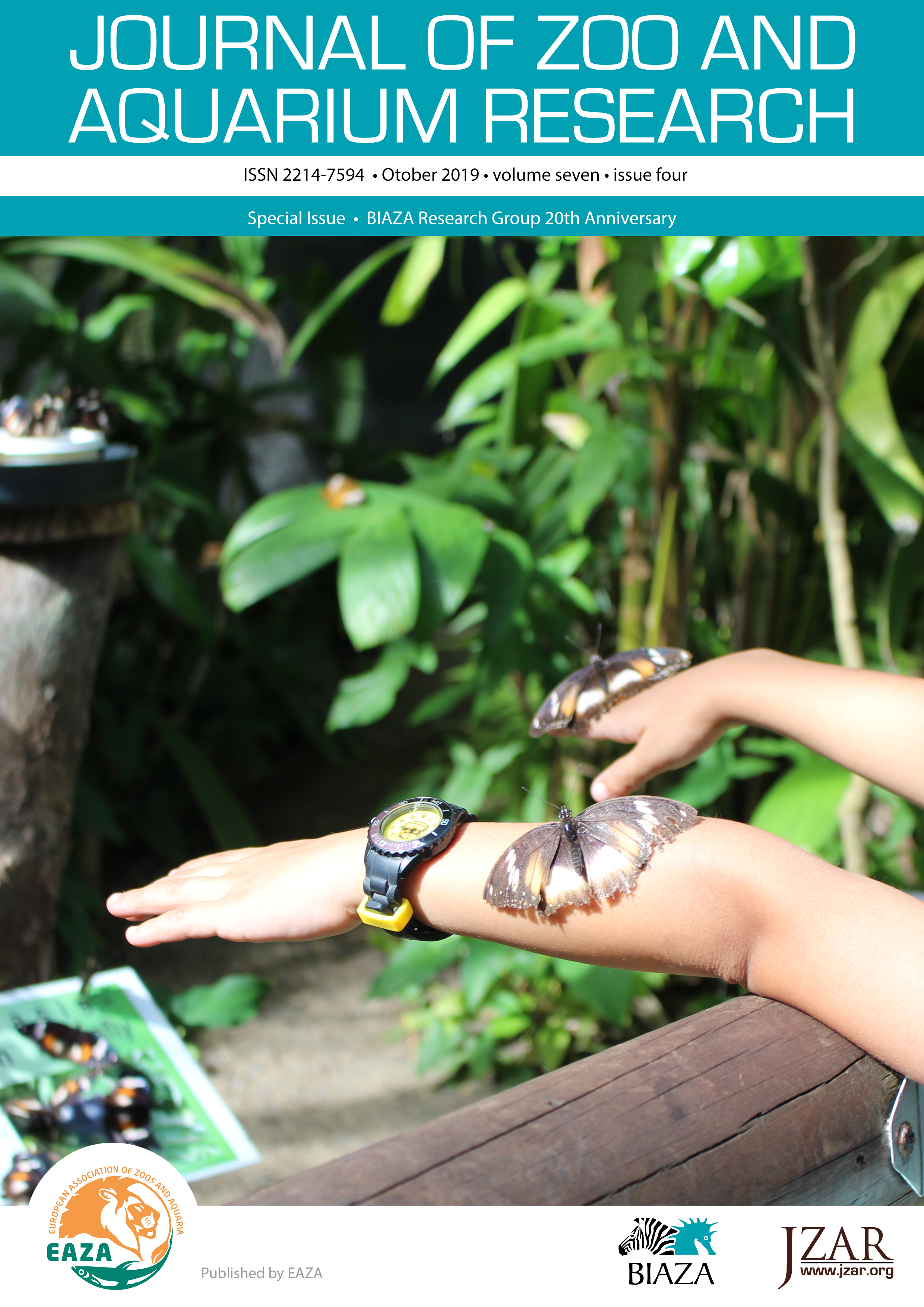Assessing the effect of zoo exhibit design on visitor engagement and attitudes towards conservation
DOI:
https://doi.org/10.19227/jzar.v7i4.422Keywords:
zoo, education, engagement, attitudes, exhibit, designAbstract
Modern zoos claims to be a platform for conservation education and zoos attempt to educate visitors using textual interpretation, public talks and engaging exhibit design. Walk-through exhibits aim to maximise the educational potential of a zoo visit by providing a unique, immersive experience that can enhance visitor connection with a species. This study assesses visitor engagement with walk-through zoo exhibits in comparison to traditional exhibits, and explores the role that educators and volunteers play in encouraging visitor engagement. Covert visitor observations were used to quantify dwell times and categorise conversational data at different exhibits. Species at walk-through exhibits elicited more comments related to surface level and deeper level information when compared to species at traditional exhibits (p<0.001). Similarly, a higher number of surface level and deeper level comments were made when a visitor had engaged with a zoo ranger or volunteer (p<0.001). Dwell times were over six times longer at walk-through exhibits; higher dwell times were significantly related to higher numbers of surface level comments (R2 =0.433) and deeper level comments (R2 =0.361). By conducting visitor surveys pre- visit and post-visit to a walk through exhibit, we found some significant changes in visitor attitudes towards pro-conservation themes, but little evidence that visitors had learned something new from the exhibit. Overall, walk-through exhibits that utilise educators or volunteers can enhance visitor engagement with a species, although further research into additional interventions is necessary to determine how this engagement may develop into pro-conservation knowledge and actions.
Downloads
Published
How to Cite
Issue
Section
License
JZAR fulfils the DOAJ definition of open access and provides free and open access to the full text of all content without delay under a Creative Commons licence. The copyright holder of JZAR publications grants usage rights to third parties, allowing for immediate free access to the work and permitting any user to read, download, copy, distribute, print, search, or link to the full texts of articles.







